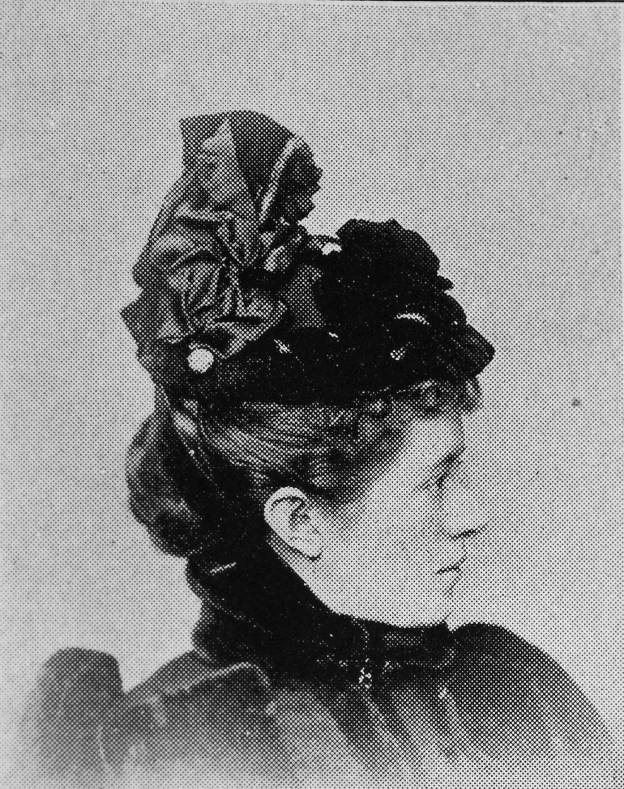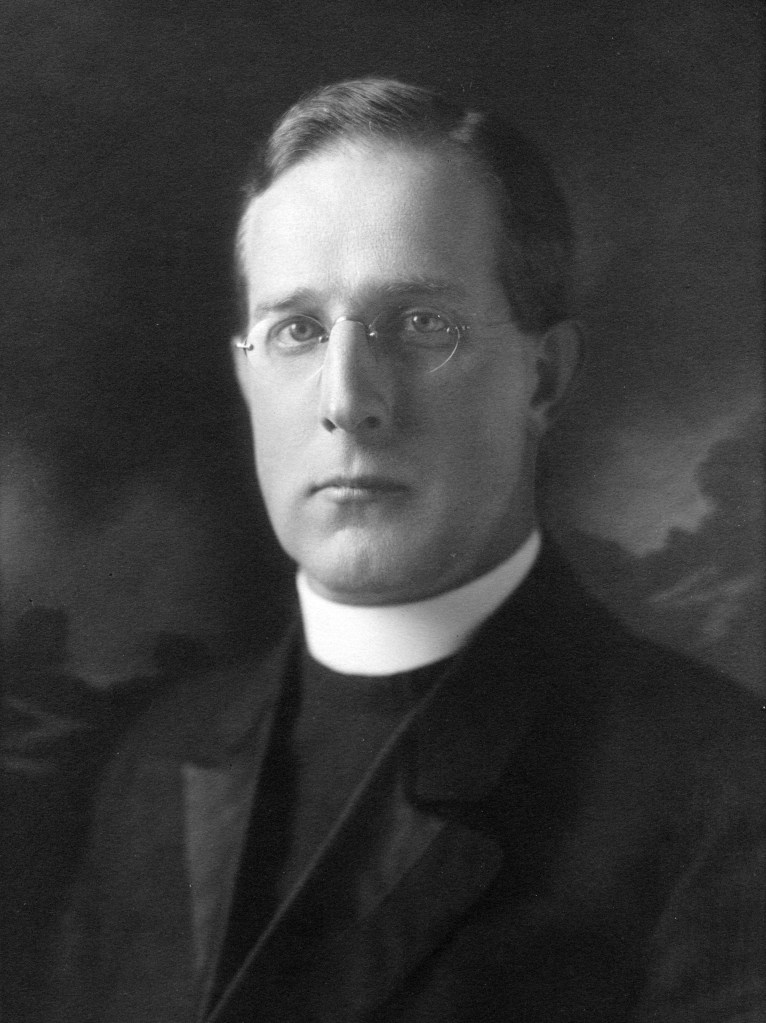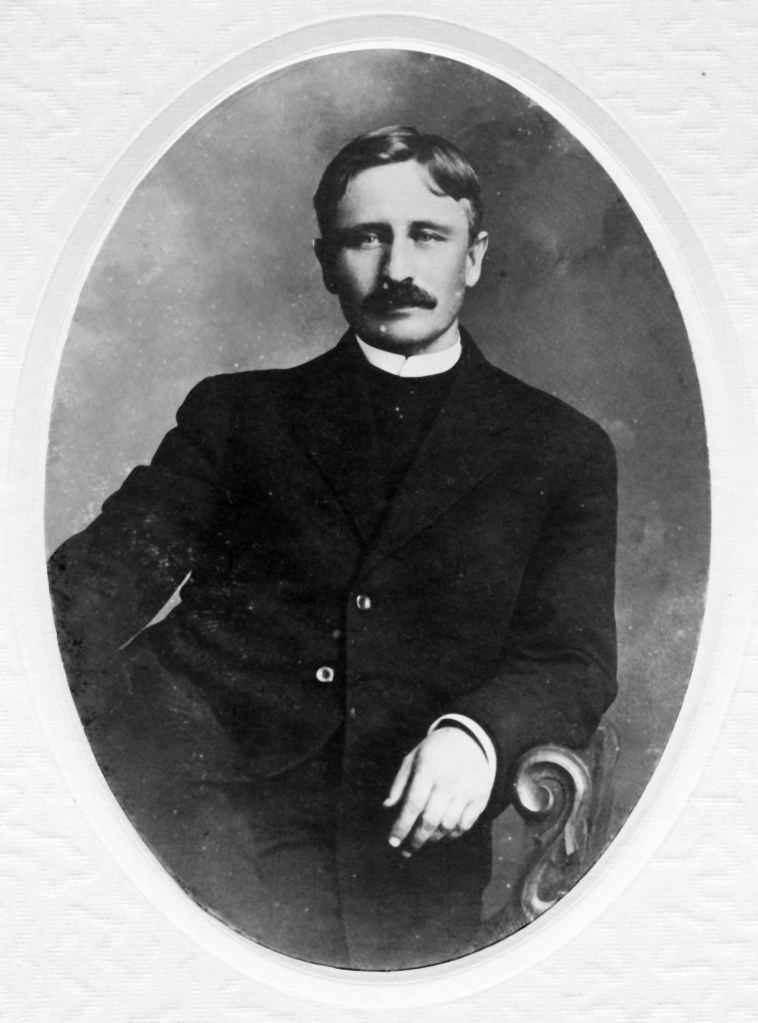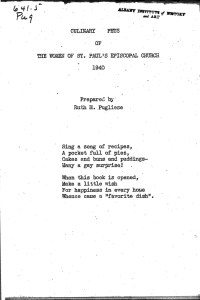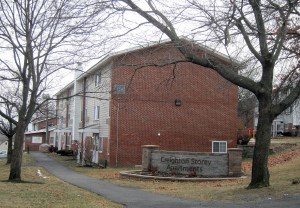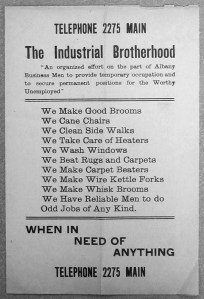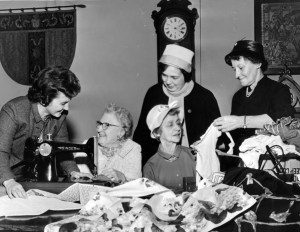We know some of the names of St. Paul’s soloists in the nineteenth century, but very little about their lives and careers. There are exceptions, especially those who went on to operatic careers (Lucy Eastcott, Henry Squires and Isabella Hinckley) and our one composer (James Mason Sayles), but for most of the rest we know only their names.
Ella Jane Graham certainly had a very successful musical career as a young women. A 1898 newspaper article describes her as “Albany’s foremost contralto.” And St. Paul’s solo quartet during the period in which it was anchored by Ella Graham and soprano Anne North Turner Rogers must have been a wonder. But Ella Graham’s teaching career — an astounding 56 years of service — and her influence as head of the Albany High School art department, deserve to be remembered and honored.
Two of Ella Graham’s nine siblings are also of interest. “Eddie” (George Edward Graham, 1863 – 1910) was head of Albany’s office of the Associated Press, and later a war correspondent and assistant managing editor of the Los Angeles Examiner. He was author of Schley and Santiago, an account of the decisive battle of the Spanish-American War. Howard Graham (1865 – 1933) was also a journalist, the resident manager of Proctor’s theaters in Albany, and later manager of theaters in North Adams, Massachusetts.
Life of Ella Jane Graham
George Lytel Graham, was born in Carlysle [Carlyle], England August 12th 1827 and died March 23rd, 1883, 56 years old. He came to the United States as a book agent for a London firm. Came to Albany, where he joined the St. George Society. They procured him the position of Sexton of St. Peter’s Church, where he served in the old St. Peters, and the present day edifice.
Elizabeth Jane Jones, born in Manchester England, August 22nd, 1837. Came to the United States with her Mother, when she was 13 years old. Went to Philadelphia, where they stayed with her Mother’s sister, Aunt Jane Morehouse. She then had an offer from the Albany Hospital as a nurse which she accepted. Lived in Albany all the rest of her life. She had a position as nursery governess to some Albany children. Here she met Father, and in her early twenties, she married him.
Mr. John Tweddle, was Father’s best friend, who came from England. Was a Malster [maltster]. He could not understand why Father did not have a trade. He gave Father a natal day present every year, so he could go back to England each year on his vacation.
Ella Jane Graham was born March 21st, 1860, 2nd oldest member of the Graham family. Died June 4th, 1934 . Funeral was from St. Paul’s Church. There were 12 sons and daughters. All the members of the family were born in Maiden Lane, except brother James. After that we moved to 10 High st. which is still standing.
Ella and my oldest sister, Mrs. Theo. Liecty, both went to school 2, then on State above Hawk St. Ella and Kathryn both graduated In 1874 from the Albany Free Academy, on State below Eagle St. Kathryn then went to work in the Weed Parsons co., where she met her husband, and married him –- years later. Ella graduated from the Albany Free Academy in the class of 1878, passing with high marks in all her studies. It was then she choose [chose] to teach.
So she persuaded her Father to ask his good friend Hon. Andrew S. Draper to see what he could do for her, as he was a member or the Board of Public Instruction, and after a small delay, he had her appointed Chart Class Teacher at School No. 5, on North Pearl St., Prof. John A. Howe, being the Principal. There was no Kindergarten at that time. I remember she used to tell me with much mirth, how Mr. Howe would say to her, just lookin[g] causally at her, go to your room please, the bell has rung, and then knowing he bad made a mistake, would say, excuse me please, you are so young looking Miss Graham. She taught there 30 years, and worked up to the 9th grade. There were 9 grades then.
When Prof. Theo. Hailes, lost his teacher of drawing in the Senior High School by marriage, he came to Ella, and said you are too good for grade teaching, apply tor Teacher of Drawing, and I will back you,. She did, and got the position, where she taught for 26 years, making in all 56 years of teaching in the Public School system of Albany. She loved drawing and music.
As Father died in 1883, and we were a large family, Mother had very little except what came in each week. Brother Will was engaged at that time, so that left Ella and Eddie to support the family, so they carried on. Ella as a young girl sang in St. Peter’s choir, so when she earned money of her own she took lessons from Prof. Chas. White, who came from New York each week. Her first position was with Mrs. Emily Hendrie Miller, organist of the Calvary Baptist Church, then on the corner of State and High sts. Her next position was at Holy Innocents, where she sang 4 years. Then she was called by Prof. Geo. E. Oliver to sing alto in St. Paul’s Church. The quartette included, Anna North Turner Rodgers, Soprano, Ella Graham, Alto, Elsworth Carr, Tenor, Ed. Kellogg, Baritone. He sang quite a few years and then retired. Ned Parkhurst filled his place and stayed until Prof. Oliver retired. The following are the churches she sang in besides the above. Jewish Synagogue. There they thought her voice was not loud enough so she did not stay. Trinity Methodist, First Presbyterian, Madison Ave. Reformed, which was the last one she sang at. After that she came back to St. Paul’s Church, and rented a pew.
These are the houses we lived in while she was with us. Moved from 10 High St., to 28 LaFayette street, where my Grand Mother died at the age of 87. Moved to 242 Hamilton street. Then Howard was married, and Alice at St. Paul’s by Freeborn G. Jewett and Dr. Battershall. Elizabeth Graham Edge is her only survivor. Then Eddie married, and Ella, Mother and I, moved to a smaller place, 101 Eagle St., and mother died there, after living there 8 years. Ella taught Night School, so she thought she should be nearer her work, so we moved to 429 Hamilton St. below Quail St., near the High school, where we lived 8 years. Then Betty came up north to go to school, and we moved to 256 Quail st., lived there for 8 years, Ella passed away suddenly the last year of our stay there. We moved next to 471 Hamilton St., living there 8 years, where Alice Edge died suddenly. Then Betty and I moved to 151 Western Ave., a nice apartment.
Ella’s life was one of sacrifice and love.
Written by Maude M. Graham, April 1946.



